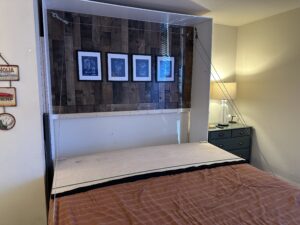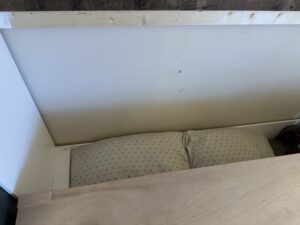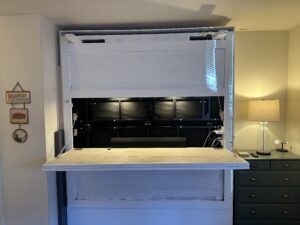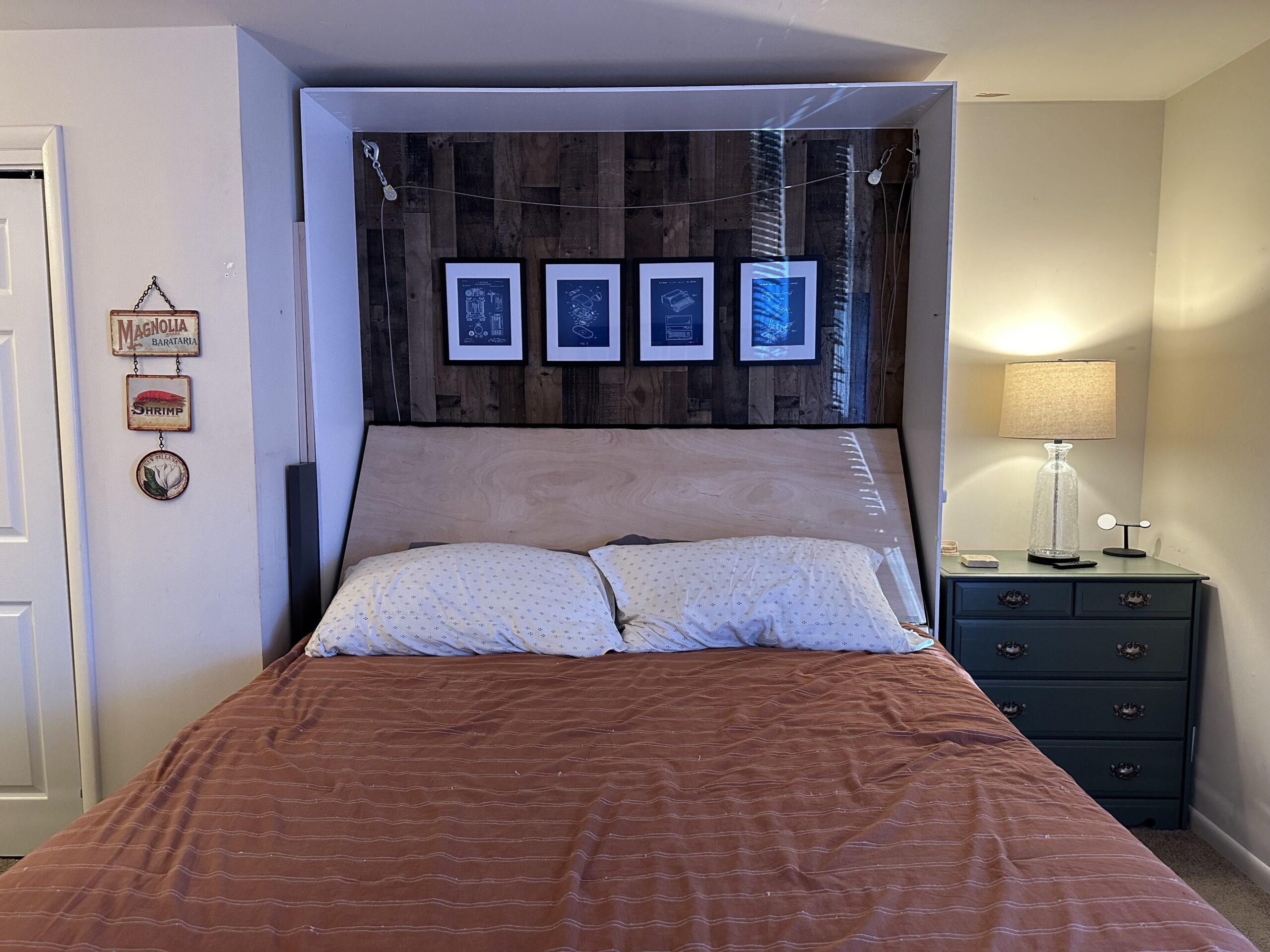Problem Definition
I don’t have enough space to work on projects in my small college apartment, and my king-size bed takes up the majority of the floor space in my bedroom, the only space I don’t share with my roommate. So, I sought to design a murphy bed that meets the following criteria:
- Must fold entirely vertical
- Must have a solution for a work table / desk in the newly available floor space. This cannot be a desk against another wall because I want to preserve a walkway around the bed.
- Must be fully stable in both the fully up and fully down positions. Understanding that the bed will likely need to be anchored to the wall, I don’t want the bed to put any force into the wall in either of these toggle positions.
- Must be (at least somewhat) nice looking in both toggle positions.
Methods
- Designed cabinet and bed structure in Solidworks.
- Devised a pulley and hoist system to lift the bed to the vertical position.
- Applied position and static force analysis methods in order to determine required pulley working load ratings, and hoist size.
- Built the large cabinet and bed structure from plywood and dimensional lumber.
- Built a fold-down desk and face frame on the bed structure with a built-in powerstrip and lighting.
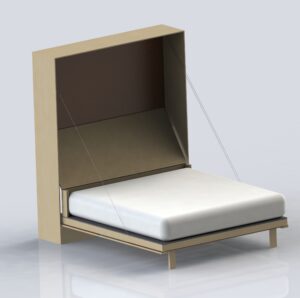
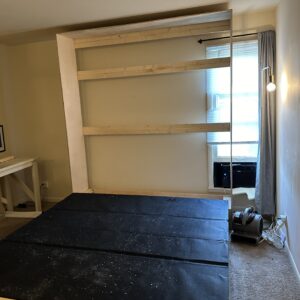

Below is a pdf of my analysis.
Results
- The bed structure and mattress together were heavier than anticipated, coming in at 360lbs versus the expected 289lbs. This is still well within the factor of safety for the pulley system.
- The standing height of the desk is very nice for working on homework and other projects.
- An unexpectedly lovely consequence is that I am forced to fully clear my desk surface every night and fully make the bed every day.
